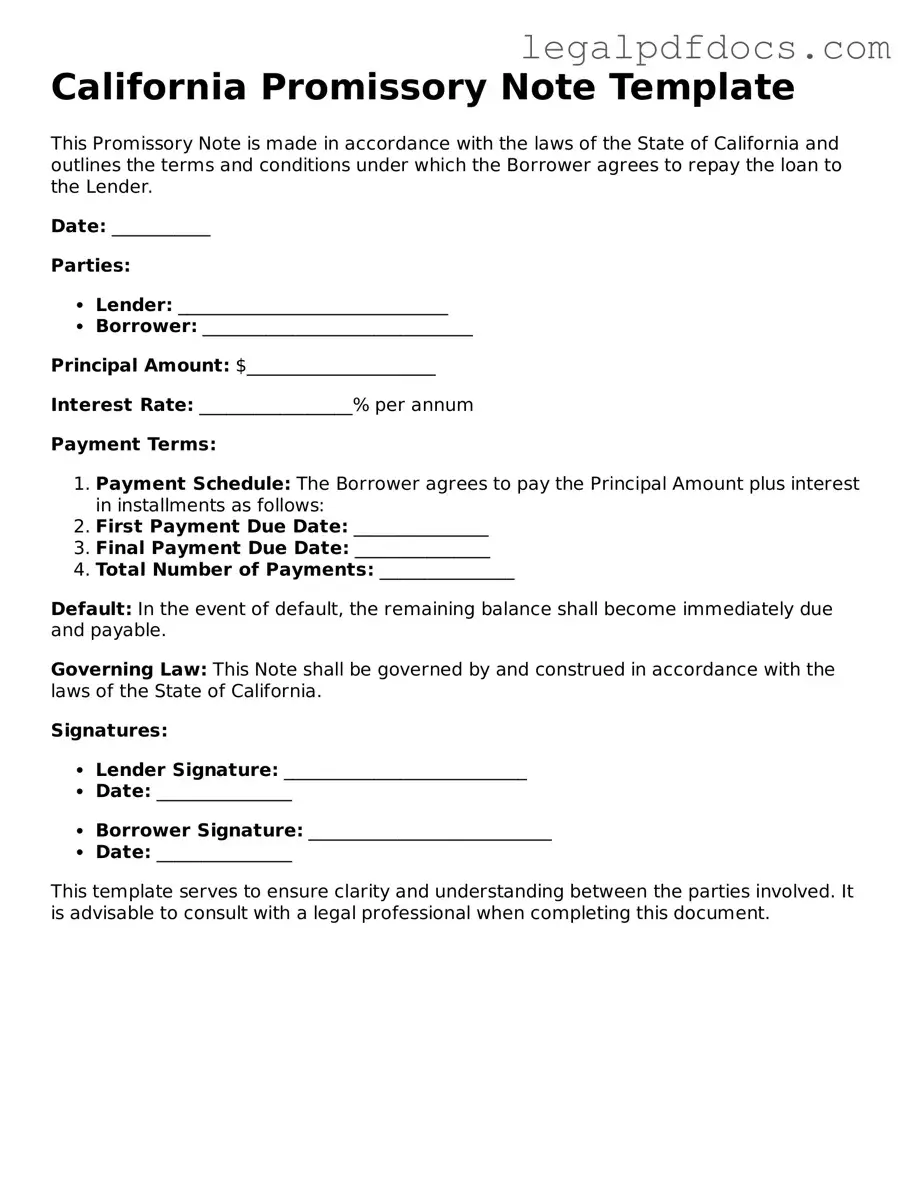Official Promissory Note Form for California
A California Promissory Note is a legal document that outlines a borrower's promise to repay a specified amount of money to a lender under agreed-upon terms. This form serves as a critical tool in personal and business transactions, ensuring clarity and protection for both parties involved. To get started on your financial agreement, fill out the form by clicking the button below.
Open Promissory Note Editor Here
